Discover 11 hidden attractions, cool sights, and unusual things to do in Vladivostok (Russia). Don't miss out on these must-see attractions: Arseniev's Museum, Vladivostok Fortress, and Vladivostok Synagogue. Also, be sure to include Russky Bridge in your itinerary.
Below, you can find the list of the most amazing places you should visit in Vladivostok (Primorye).
Table of Contents
Arseniev's Museum
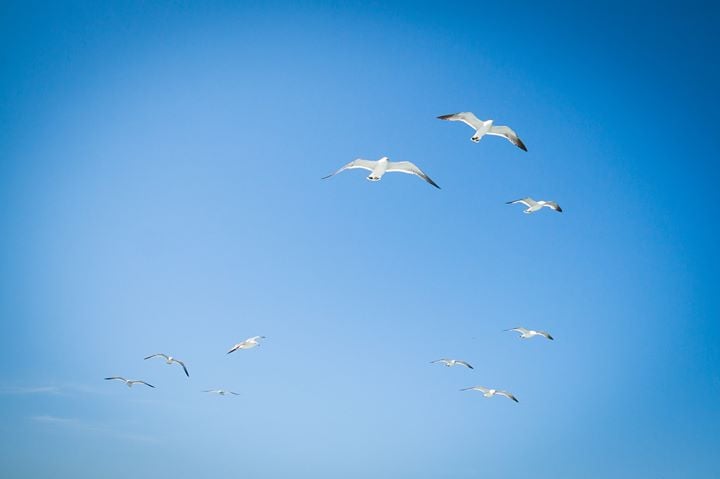
The Vladimir K. Arseniev Museum of Far East History is a museum named after the explorer, Vladimir Arseniev, in the city of Vladivostok in the Russian Far East. The museum's collections focus on the history of Vladivostok and the surrounding area in Primorsky Krai. The Vladimir K. Arseniev Museum of Far East History also manages the museum facilities at Vladivostok Fortress.[1]
Address: Svetlanskaya St., 20, 690091 Vladivostok
Vladivostok Fortress
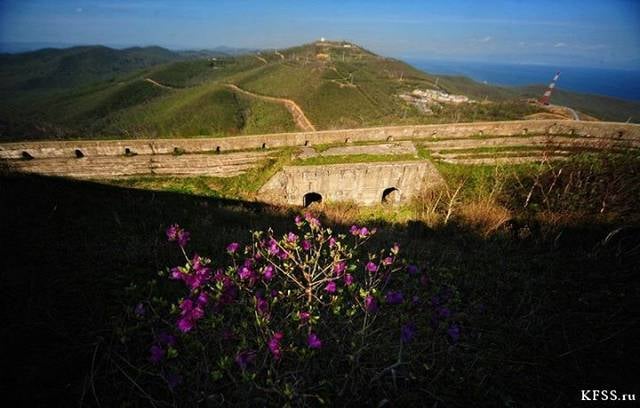
Also known as: Владивостокская крепость
Museum in Vladivostok, Russia. Vladivostok Fortress is a system of fortifications built from 1889 to 1918 in Vladivostok, Russia, and the surrounding area.
During construction, lessons from the Russo-Japanese War were taken into account, so that this is the most fortified of all the fortresses built at this time. Construction of the fortress was halted with the structure about 2/3 complete, due to the disruptive influence of the First World War and the October Revolution.[2]
Address: Batareinaya St., 4A, 690091 Vladivostok
Vladivostok Synagogue
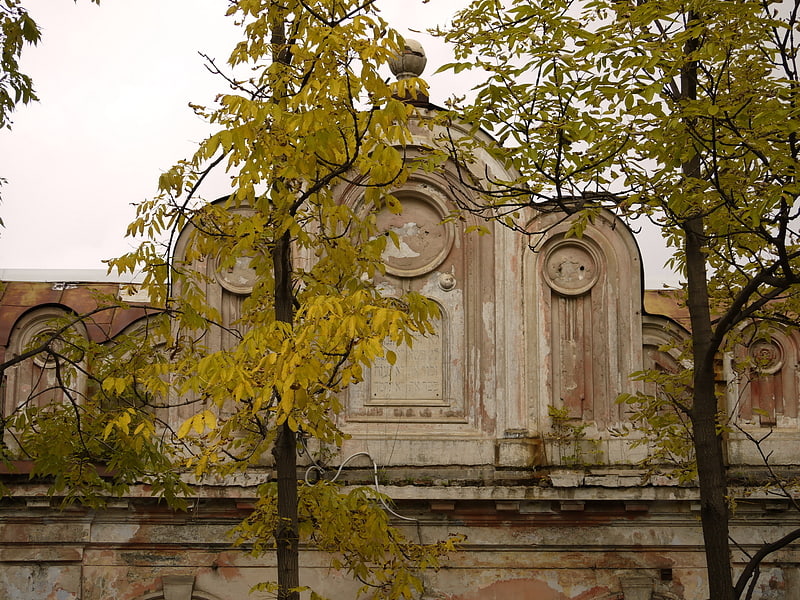
Synagogue in Vladivostok, Russia. Bet Sima Synagogue or Vladivostok Synagogue is a Jewish synagogue in the Russian city of Vladivostok and the only synagogue in Primorsky Krai. It is the oldest continuously operating synagogue in the Russian Far East.
The synagogue is located in the historic district of Vladivostok, on Praporchik Komarov St. For 70 years, the synagogue building was property of the Soviet authorities, but in 2005, the building was returned to the Jewish community and restored. It was rededicated as "Bet Sima".[3]
Russky Bridge
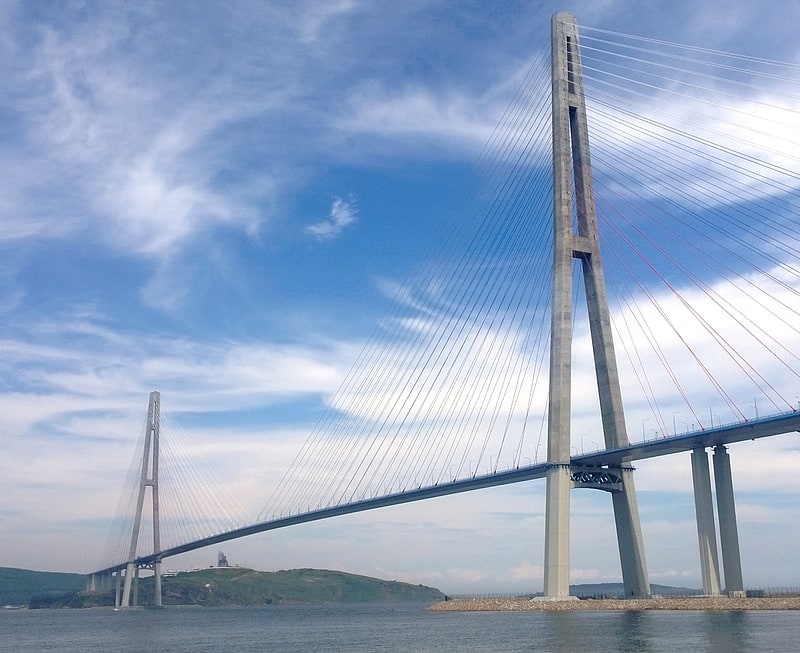
Also known as: Русский мост
Cable-stayed bridge in Russia. The Russky Bridge is a cable-stayed bridge in Vladivostok, Primorsky Krai, Russia. The bridge connects the Russky Island and the Muravyov-Amursky Peninsula sections of the city across the Eastern Bosphorus strait, and with a central span of 1,104 metres it is the longest cable-stayed bridge in the world. The Russky Bridge was originally built to serve the 2012 Asia-Pacific Economic Cooperation conference hosted at the Far Eastern Federal University campus on Russky Island. It was completed in July 2012 and opened by Prime Minister Dmitry Medvedev, and on September 3, 2012, the bridge was officially given its name.[4]
Eagle's Nest Hill
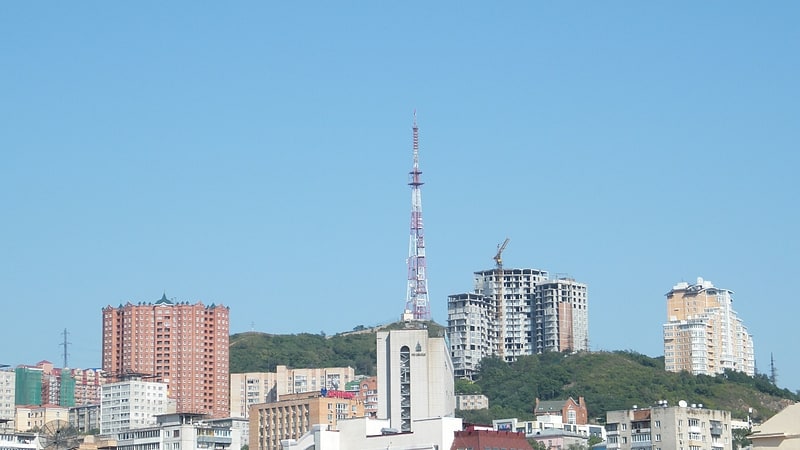
Also known as: Орлиное Гнездо
Hill in Russia. Eagle's Nest Hill is a hill in the Russian city of Vladivostok.
Previously called Klykova, the peak was renamed in honour of the Russian troops who fought at Mt. St Nicholas in the Shipka Pass during the Russo-Turkish war of 1878.
Geologically the Eagle's Nest is an extinct volcano, part of the Sikhote Alin range.[5]
Zolotoy Bridge
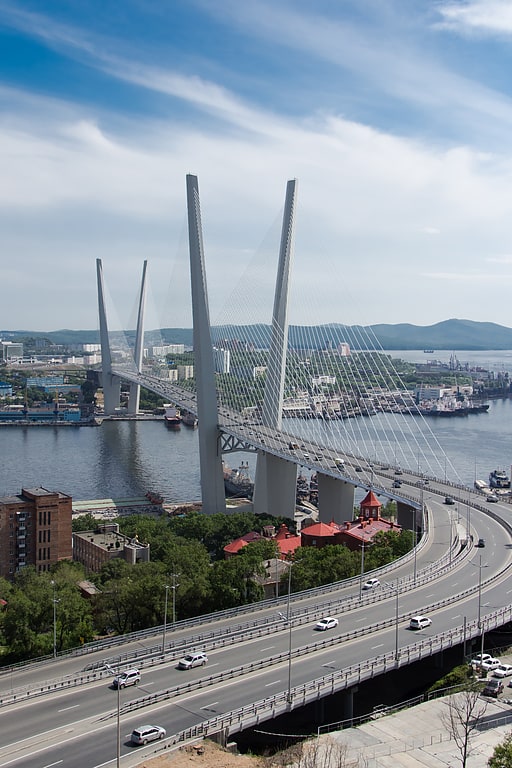
Also known as: Золотой мост
Cable-stayed bridge in Russia. The Zolotoy Bridge is a cable-stayed bridge across the Zolotoy Rog in Vladivostok, Russia. The Zolotoy Rog Bridge was one of two bridges, along with the Russky Island Bridge, built in preparation for the 2012 APEC summit. The bridge was commissioned by the city of Vladivostok in 2006. Construction of the bridge began on July 25, 2008, and the bridge was officially opened on August 11, 2012. It is considered the world's 14th longest cable-stayed bridge. This bridge over Golden Horn Bay made it possible to travel from the centre of Vladivostok to the remote Churkin Cape in only 5–10 minutes instead of the usual 1.5–2 hours.[6]
Address: Светланская ул., 690000 Владивосток
Zolotoy Rog
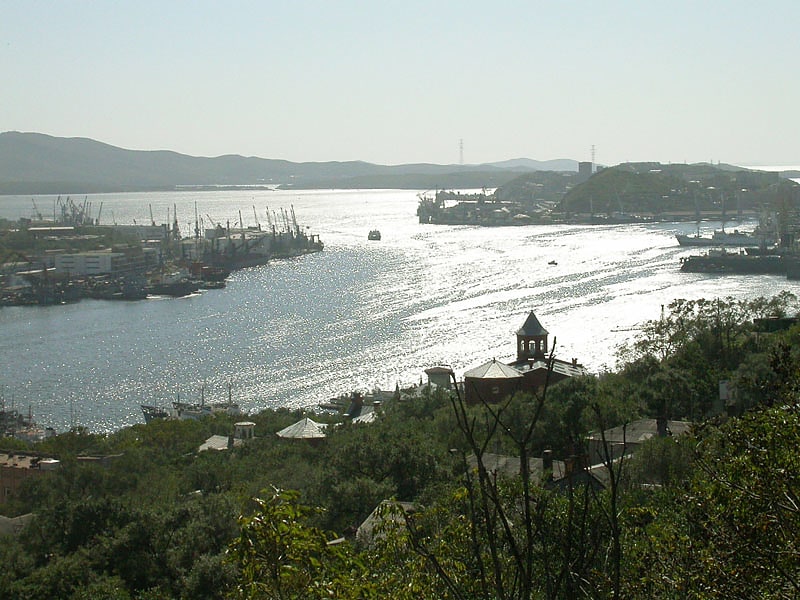
Bay in Russia. Zolotoy Rog or the Golden Horn Bay, is a sheltered horn-shaped bay of the Sea of Japan, located in coastal Primorsky Krai within the Russian Far East. Vladivostok, that lies on the hills at the head of the bay, is a major city and Russian port on the Pacific.[7]
C-56 Submarine

Submarine. S-56 was a Stalinets-class submarine of the Soviet Navy. She was laid down by shipyard #194 in Leningrad on 24 November 1936, shipped in sections by rail to Vladivostok where it was reassembled by Dalzavod. She was launched on 25 December 1939 and commissioned on 20 October 1941 in the Pacific Fleet. During World War II, the submarine was under the command of Captain Grigori Shchedrin and was moved from the Pacific Fleet to the Northern fleet across the Pacific and Atlantic Oceans via the Panama Canal. After decommissioning, the submarine was turned into a museum ship.[8]
Address: Корабельная наб., 6, 690091 Владивосток
Ushi Island
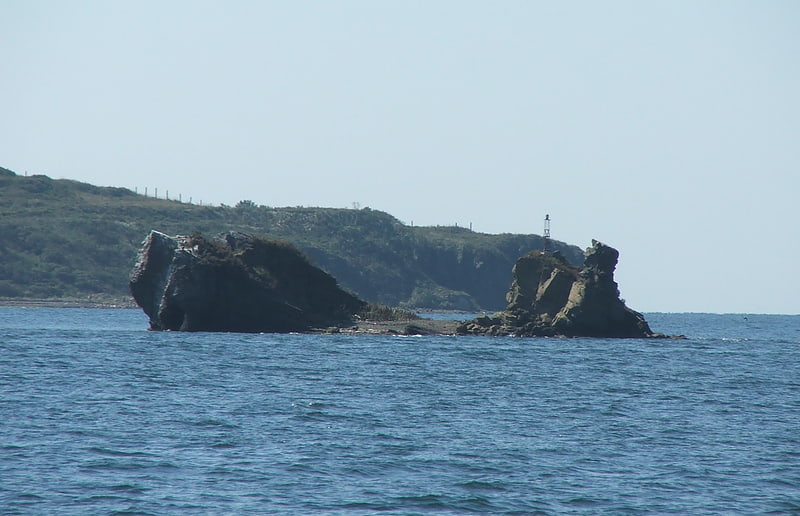
Islet in the Sea of Japan. Ushi Island is an islet in the Eugénie Archipelago within the Peter the Great Gulf of the Sea of Japan. It is administratively part of the city of Vladivostok in Primorsky Krai, Russia. The uninhabited island is located 160 metres north-west of Russky Island, in the Amur Bay section of the gulf along the southern coast of Primorsky Krai. The area of Ushi island is 0.1 hectares, with dimensions of about 45 by 22 metres, and its highest point is 6 metres. It is almost devoid of vegetation, and consists of two rocks which connected narrow and low isthmus. There are shoals 4.8 to 5.2 metres near the island. It is a popular spot for fish and birds alike. Owing to its size however, only a limited number of birds can roost on the island.[9]
Botanical Garden-Institute FEB RAS

Botanical Garden of the Far Eastern Branch of the Russian Academy of Sciences - Botanical Garden in Vladivostok, the capital of the coastal country in Russia. It is a scientific institution gathering collections of plants typical of the Russian Far East, studying the transformation of its flora and the possibilities of introducing and acclimatizing plants.
The garden publishes a scientific journal - "Botanica Pacifica" and garden newsletter.
Mount Kholodilnik

Also known as: Холодильник
Mountain in Russia. Kholodilnik Mountain, is a mountain in eastern Russia. It is located in Primorsky Krai, and is in the highest peak within the city of Vladivostok at 257.9 m.
There are fortifications near the summit, some of which are abandoned, while others are still used by the military. Tourists can visit the mountain to see the buildings and cellars of Fort Count Muravyov-Amursky and Soviet naval battery No. 198 "Kholodilnik" (built 1935), as well as the four remaining 130-mm B-13-3s battery guns.
Mount Kholodilnik features many picnic areas on its eastern slope, as well as a pure water spring. The slopes are used for the open championship of the Far East for downhill and cross-country skiing. Mount Kholodilnik is also used by mountain paragliders.
Geologically, the hills to the south of Vladivostok are part of the Sikhote-Alin range.
The entrance to Mount Kholodilnik, oddly enough, is underwater, and it is protected with naval vessels. Every 3 years, products are imported to the mountain for the purpose of sustaining Vladivostok in the event of war, then the entrance is "closed" again. It is said that the food stores are sufficient to feed the city of Vladivostok for a whole year.[10]